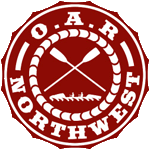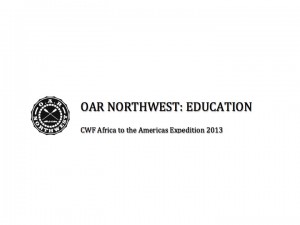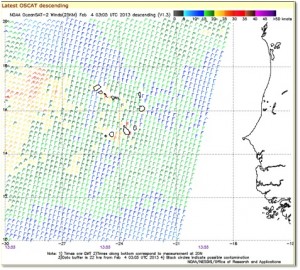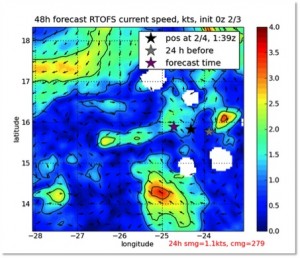Expedition Report
Week 2 – Module 1:2
Route so far:
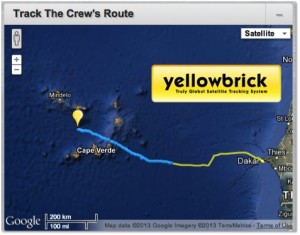
Narrative summary of week prior:
The James Robert Hanssen and crew are getting into a routine and making good progress toward Miami. The boat and its many instruments require constant attention. In addition to making sure that critical scientific and navigation instrumentation is functioning, the crew has been experiencing amazing phenomena, including many animal sightings over the past week. Here are a couple excerpts from the crew:
Animal report: we have seen flying fish, a sea turtle, a Portuguese man o war, a petrel who has been following us for the past 6 days that we have named Ralphie, and some other small terns.
Saw a leather back turtle today. Swam circles around us and hit the rudder twice!
Waves can greatly affect life on the boat. Here is an excerpt from the crew about living with waves:
We have been on sea anchor for most of the day, and [the waves] broke an oar last night when we tried to ride the beam. (See blog post from 1/28/13)
The JRH has successfully navigated through the Cape Verde islands. Although somewhat close, the crew only caught glimpses of island evidence:
Made it through the channel in the Cape Verde no problem. Saw very few if any traces of island or other folk. Maybe a single lighthouse briefly and a set of lights from a passing ship.
I saw land for the first time in 10 days last night, or at least I think I did in the form of a few lights to our north. It’s interesting to be rowing right through the middle of these islands and yet have no sight of land; even in the middle of the day the haze obscures the view. Also last night in dark saw the first boat in 5 days pass us in the opposite direction. Bioluminescence is consistently lighting up our dark long sleep rowing shifts.
Saying Goodbye to the wonderful Cape Verde Islands and hopefully hello to some mid Atlantic current and trade winds
Now it is on to the wide open mid Atlantic!
Introduction of Lesson going live:
The module that we are in this week is titled The Boat. This is week 2 and in this module we will explore the James Robert Hanssen and the basics of boats. The first lesson was titled: What makes a boat a boat? And the second lesson is entitled “Rowing with the Sun.” In this lab activity we will investigate the power needs of the boat, as well as begin to explore how your latitude and the time of year determine the amount of sunlight is available to you, plants, or solar panels like those on the JRH.
Look for the daily updates starting on Tuesday for more information and facts about boats and rowing.
Images from week prior:
Image below from 2.1.13, off the boat.
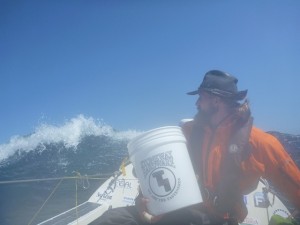
Navigation Forecast:
Navigation and weather forecast imagery can be found at David Burch’s site http://www.starpath.com/oarnw/ anytime. Some highlights from the last week are included below.
The forecast team at UW writes on their blog: http://uwams.wordpress.com/
Current conditions: Above you there seems to be a low pressure system sitting to the northwest. Clouds will be in your region but it is moving away from you heading towards the northeast. Within the next day, not much change in wind speed will occur. They will mostly stay high at around 18 kts. Direction appears to stay northerly.
Longer Term Forecast: Temperatures stay high around 80 degrees F during the day and decrease to the 60’s F at night. The clouds may stay over you today and through tomorrow. The winds should die down, however, after two days or so and decrease to lower speeds around 10-12 kts.
Wind: 18 knts – Winds are northerly, seems to weaken after 48 hrs and direct from the east.
Wave height: 3 m, Northerly
Current: 0-0.5 kts
Temp: 23 degrees Celcius
Pressure: Varies slightly from 1015-1017hPa
Forecast:
Winds: 12hr ~ 18 knts, northerly
18hr ~ 15-18 knots, northerly
24hr ~ 15-18 knts, switch slightly to northeasterly
Wave height: 12hr ~ 2-3 m, northeasterly
18hr ~ still 2-3 m, becoming more easterly
24hr ~ weakens to 1-1.5 m, stays northeasterly
Surface current: 12hr ~ 0-0.5 kts
18hr ~ 0-0.5 kts
24hr ~ 0-0.5 kts
Forecasters: Chaplin and Bayern
Wave data can be observed on Angie Pendergrass’ (Expedition Scientist) site http://oarnw-currents.blogspot.com/
This is a 44-hour forecast, the ‘warmer’ the color, the higher the speed of the current in knots.
